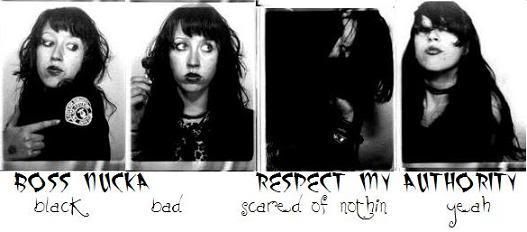|
In the beginning of 1918, a party called the Freier Ausschuss für einen deutschen Arbeiterfrieden (Free Committee for a German Workers' Peace) was created in Bremen, Germany. In 1919, they changed its name to the Deutsche Arbeiterpartei (German Workers' Party). This party is the formal forerunner of the NSDAP, and became one of many völkisch movements that existed in Germany after its defeat in World War I. In order to investigate the DAP, German army intelligence sent a young corporal, Adolf Hitler, to monitor party activities. However, he was impressed by what he saw, and he joined as Member Number 555 (although Hitler later claimed to be "Party Member number 7" to make it look like he was a founder). He in fact was the 7th member of the DAP's central committee. At this early stage, Hitler brought up the idea of renaming the party, and he proposed the name "Social Revolutionary Party" (4). However, Rudolf Jung insisted that the party should follow the pattern of Austria's Deutsche Nationalsozialistische Arbeiterpartei. As a consequence, the DAP was shortly renamed the NSDAP on February 24, 1920.Adolf Hitler became Nazi Party chairman on July 29, 1921 and at once began a program where the Nazi Party became a radical and revolutionary organization. The Sturmabteilung (storm troopers) was founded that same year and began a policy of expanding the Nazi Party by way of fear, intimidation, and violent attacks on other political parties.
In these early years, the Nazi Party was confined mainly to Bavaria in the city of Munich. Splinter Nazi groups did exist elsewhere in Germany, however the programs and agendas were such that, even among the Nazis, such extra-Bavarian
Nazi groups were considered separate from the main Nazi Party as a whole.Disaster presented itself in 1923 when the Nazi Party attempted to seize control of the Bavarian government in the so
called "Beer Hall Putsch". The two day revolution was crushed by Munich authorities and several Nazis were killed in the process. Hitler and his top Nazi advisors were tried and convicted of treason. Sentences ranged from 12-18 months with Hitler serving his term at Landsberg prison. During this period, from 1923 to 1925, the Nazi Party ceased to exist. However, Hitler would spent the time writing Mein Kampf, detailing how he would accomplish a political comeback
once he was released from prison.
[edit]
Upon Adolf Hitler's release from prison in 1925, the NSDAP was refounded with Hitler taking Party membership number 1. That same year, the Schutzstaffel (SS) was founded. The evolution of the party, during this era, is an integral part of the decline of the Weimar State.
The second Nazi Party saw Gottfried Feder as economic theoretician and Rudolf Jung supplied the reborn Nazi Party with a ready-made ideology that he carried with him from Czechoslovakia. It was the 25-point program. Hitler added his ideas about foreign policy and Julius Streicher added his more virulent anti-Semitic views.
Between 1925 and 1929, the Nazis competed poorly in elections. In the election of 1930, however, the Nazis (propelled by Germany's economic problems in the incipient Great Depression) increased their vote dramatically, becoming the second largest party in the Reichstag. The NSDAP continued to improve its position in the years thereafter, despite a brief ban in 1932 of the SA (the party's private army), and in the elections of 1932 the party reached a total of 13.75 million votes and became the largest voting bloc in the Reichstag.
__________________
stop the world - I want to get off

|